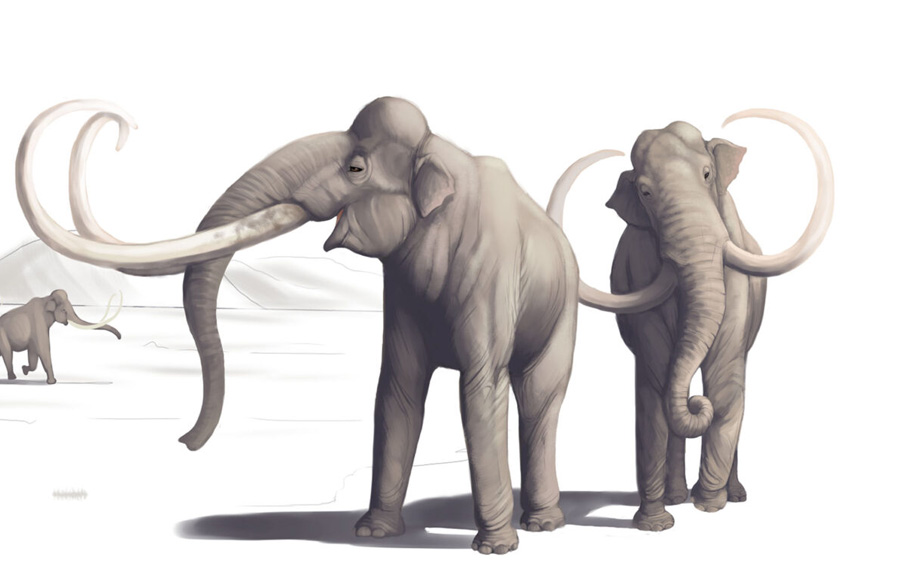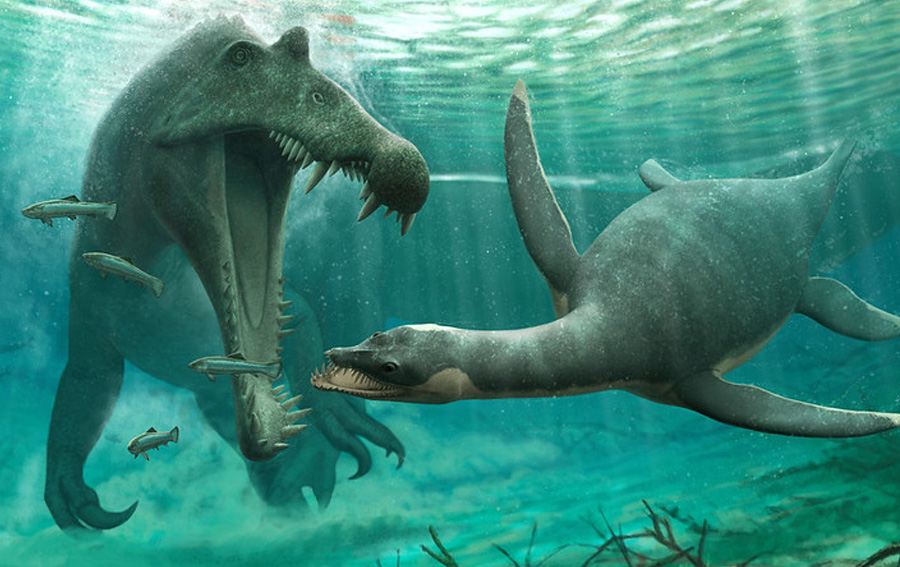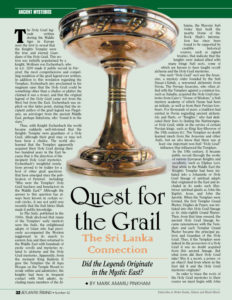exploration Archives - ATLANTIS RISING THE RESEARCH REPORT (original) (raw)

Could newly discovered signs of disturbance in the dwarf galaxies of one of Earth’s nearest galaxy clusters mean we need an alternative gravity theory?
According to the standard model of cosmology, the vast majority of galaxies are surrounded by a halo of dark matter particles. This halo is invisible, but its mass exerts a strong gravitational pull on galaxies in the vicinity. A new study led by the University of Bonn and the University of Saint Andrews (Scotland) challenges this view of the Universe. The results suggest that the dwarf galaxies of Earth’s second closest galaxy cluster – known as the Fornax Cluster – are free of such dark matter halos. The study appeared in the journal Monthly Notices of the Royal Astronomical Society.
Dwarf galaxies are small, faint galaxies that can usually be found in galaxy clusters or near larger galaxies. Because of this, they might be affected by the gravitational effects of their larger companions. “We introduce an innovative way of testing the standard model based on how much dwarf galaxies are disturbed by gravitational ,tides’ from nearby larger galaxies”, said Elena Asencio, a PhD student at the University of Bonn and the lead author of the story. Tides arise when gravity from one body pulls differently on different parts of another body. These are similar to tides on Earth, which arise because the moon pulls more strongly on the side of Earth which faces the moon.
The Fornax Cluster has a rich population of dwarf galaxies. Recent observations show that some of these dwarfs appear distorted, as if they have been perturbed by the cluster environment. “Such perturbations in the Fornax dwarfs are not expected according to the Standard Model,” said Pavel Kroupa, Professor at the University of Bonn and Charles University in Prague. “This is because, according to the standard model, the dark matter halos of these dwarfs should partly shield them from tides raised by the cluster.”
The authors analyzed the expected level of disturbance of the dwarfs, which depends on their internal properties and their distance to the gravitationally powerful cluster center. Galaxies with large sizes but low stellar masses and galaxies close to the cluster centre are more easily disturbed or destroyed. They compared the results with their observed level of disturbance evident from photographs taken by the VLT Survey Telescope of the European Southern Observatory.
“The comparison showed that, if one wants to explain the observations in the standard model” – said Elena Asencio – “the Fornax dwarfs should already be destroyed by gravity from the cluster center even when the tides it raises on a dwarf are sixty-four times weaker than the dwarf’s own self-gravity.” Not only is this counter-intuitive, she said, it also contradicts previous studies, which found that the external force needed to disturb a dwarf galaxy is about the same as the dwarf’s selfgravity.
The authors conclude that, in the standard model, it is not possible to explain the observed morphologies of the Fornax dwarfs in a self-consistent way. They repeated the analysis using Milgromian dynamics (MOND). Instead of assuming dark matter halos surrounding galaxies, the MOND theory proposes a correction to Newtonian dynamics by which gravity experiences a boost in the regime of low accelerations.
(https://doi.org/10.1093/mnras/stac1765 / https://arxiv.org/abs/2208.02265)

AR #70
Why Can’t Science See the Light?
by Michael Tymn

About 37,000 years ago, a mother mammoth and her calf met their end at the hands of human beings.
Bones from the butchering site record how humans shaped pieces of their long bones into disposable blades to break down their carcasses, and rendered their fat over a fire. But a key detail sets this site apart from others from this era. It’s in New Mexico – a place where most archaeological evidence does not place humans until tens of thousands of years later.
A recent study led by scientists with The University of Texas at Austin finds that the site offers some of the most conclusive evidence for humans settling in North America much earlier than conventionally thought.
The researchers revealed a wealth of evidence rarely found in one place. It includes fossils with blunt-force fractures, bone flake knives with worn edges, and signs of controlled fire. And thanks to carbon dating analysis on collagen extracted from the mammoth bones, the site also comes with a settled age of 36,250 to 38,900 years old, making it among the oldest known sites left behind by ancient humans in North America.
“What we’ve got is amazing,” said lead author Timothy Rowe, a paleontologist and a professor in the UT Jackson School of Geosciences. “It’s not a charismatic site with a beautiful skeleton laid out on its side. It’s all busted up. But that’s what the story is.”
The findings were published in Frontiers in Ecology and Evolution.
Rowe does not usually research mammoths or humans. He got involved because the bones showed up in his backyard, literally. A neighbor spotted a tusk weathering from a hillslope on Rowe’s New Mexico property in 2013. When Rowe went to investigate, he found a bashed-in mammoth skull and other bones that looked deliberately broken. It appeared to be a butchering site. But suspected early human sites are shrouded in uncertainty. It can be notoriously difficult to determine what was shaped by nature versus human hands.
This uncertainty has led to debate in the anthropological community about when humans first arrived in North America. The Clovis culture, which dates to 16,000 years ago, left behind elaborate stone-wrought tools. But at older sites where stone tools are absent, the evidence gets more subjective, said retired Texas State University Professor Mike Collins, who was not involved with this paper and who oversaw research at Gault, a well-known archaeological site near Austin with an abundance of Clovis and pre-Clovis artifacts.
Although the mammoth site lacks clearly associated stone tools, Rowe and his co-authors discovered an array of supporting evidence by putting samples from the site through scientific analyses in the lab.
Based on genetic evidence from Indigenous populations in South and Central America and artifacts from other archaeological sites, some scientists have proposed that North America had at least two founding populations: the Clovis and a pre-Clovis society with a different genetic lineage.
The researchers suggest that New Mexico site, with its age and bone tools instead of elaborate stone technology, may lend support to this theory. Collins said the study adds to a growing body of evidence for pre-Clovis societies in North America while providing a toolkit that can help others find evidence that may have been otherwise overlooked.
The research was funded by the Jackson School, the National Science Foundation, and the W.J.J. Gordon Foundation.

AR #108
Calico, California and the Early Man Dispute
by Michael Cremo


Fossils of small plesiosaurs, long-necked marine reptiles from the age of dinosaurs, have been found in a 100-million year old river system that is now Morocco’s Sahara Desert. This discovery suggests some species of plesiosaur, traditionally thought to be sea creatures, may have lived in freshwater.
Plesiosaurs, first found in 1823 by fossil hunter Mary Anning, were prehistoric reptiles with small heads, long necks, and four long flippers. They inspired reconstructions of the Loch Ness Monster, but unlike the monster of Loch Ness, plesiosaurs were marine animals – or were widely thought to be.
Now, scientists from the University of Bath and University of Portsmouth in the UK, and Université Hassan II in Morocco, have reported small plesiosaurs from a Cretaceous-aged river in Africa, in the journal Cretaceous Research.
The fossils include bones and teeth from three-meter long adults and an arm bone from a 1.5 meter long baby. They hint that these creatures routinely lived and fed in freshwater, alongside frogs, crocodiles, turtles, fish, and the huge aquatic dinosaur Spinosaurus.
These fossils suggest the plesiosaurs were adapted to tolerate freshwater, possibly even spending their lives there, like today’s river dolphins.
“It’s scrappy stuff, but isolated bones actually tell us a lot about ancient ecosystems and animals in them. They’re so much more common than skeletons, they give you more information to work with” said Dr. Nick Longrich, corresponding author on the paper.
“The bones and teeth were found scattered and in different localities, not as a skeleton. So each bone and each tooth is a different animal. We have over a dozen animals in this collection.”
Whilst bones provide information on where animals died, the teeth are interesting because they were lost while the animal was alive – so they show where the animals lived.
What’s more, the teeth show heavy wear, like those fish-eating dinosaur Spinosaurus found in the same beds.
The scientists say that implies the plesiosaurs were eating the same food- chipping their teeth on the armored fish that lived in the river. This hints they spent a lot of time in the river, rather than being occasional visitors.
While marine animals like whales and dolphins wander up rivers, either to feed or because they’re lost, the number of plesiosaur fossils in the river suggest that’s unlikely.
A more likely possibility is that the plesiosaurs were able to tolerate fresh and salt water, like some whales, such as the beluga whale.
It’s even possible that the plesiosaurs were permanent residents of the river, like modern river dolphins. The plesiosaurs’ small size would have let them hunt in shallow rivers, and the fossils show an incredibly rich fish fauna.
Dr Longrich said: “We don’t really know why the plesiosaurs are in freshwater.
“It’s a bit controversial, but who’s to say that because we paleontologists have always called them ‘marine reptiles’, they had to live in the sea? Lots of marine lineages invaded freshwater.”

AR #86
Nessie Makes a Comeback

By Rachel Gordon
Billions of users routinely flock to the online, anonymously editable encyclopedia knowledge bank for just about everything, but how this unauthoritative source influences our discourse and decisions is hard to reliably trace. Can we measure how living in a Wiki World is playing out in reality?
Researchers from MIT’s Computer Science and Artificial Intelligence Laboratory (CSAIL) and Maynooth University, Ireland came up with a friendly stress test: creating new legal Wikipedia articles to examine how they affect the legal decisions of judges.
They set off by developing over 150 new Wikipedia articles on Irish Supreme Court decisions, written by law students, half of which were randomly chosen to be uploaded where they could be used by judges, clerks, lawyers, and so on—the “treatment” group. The other half were kept offline, and this second group of cases provided the counterfactual basis of what would happen to a case absent a Wikipedia article about it (the “control”).
They then looked at two measures—whether the cases were more likely to be cited as precedents by subsequent judicial decisions, and whether the argumentation in court judgments echoed the linguistic content of the new Wikipedia pages.
It turned out the influx of articles tipped the scales: getting a Wikipedia article increased a case’s citations by more than 20%. The increase was statistically significant and the effect was particularly strong for cases that supported the argument the citing judge was making in their decision (but not the converse). Unsurprisingly, the increase was bigger for citations by lower courts—the High Court—and mostly absent for citations by appellate courts—the Supreme Court and Court of Appeal. The researchers suspect that this is showing that Wikipedia is used more by judges or clerks who have a heavier workload, for whom the convenience of Wikipedia offers a greater attraction.
Their statistical model essentially compared how much citation behavior changed for the treatment group (first difference: before vs. after) and how that compared with the change that happened for the control group (second difference: treatment vs. control).
“To our knowledge, this is the first randomized field experiment that investigates the influence of legal sources on judicial behavior. And because randomized experiments are the gold standard for this type of research, we know the effect we are seeing is causation, not just correlation,” says MIT researcher Neil Thompson, the lead author of the research. “The fact that we wrote up all these cases, but the only ones that ended up on Wikipedia were those that won the proverbial “coin flip,” allows us to show that Wikipedia is influencing both what judges cite and how they write up their decisions. Our results also highlight an important public policy issue. With a source that is as widely used as Wikipedia, we want to make sure we are building institutions to ensure that the information is of the highest quality. The finding that judges or their staffs are using Wikipedia is a much bigger worry if the information they find there isn’t reliable.”
The paper was written by Thompson, and Flanagan, Edana Richardson and McKenzie of Maynooth University, and Xueyun Luo of Cornell University. The paper will be published in: Kevin Tobia (ed). The Cambridge Handbook of Experimental Jurisprudence. New York: Cambridge University Press.

AR #112
“Wikipedia and the Slant Factor”
by Martin Ruggles

By J. Douglas Kenyon
“One of the most sacred Catholic artifacts ever,” stolen in June from a French church, has now been returned by the repentant thief. According to Britain’s The Daily Mail newspaper, a professional art detective recovered the relic, believed by the faithful, to contain actual drops of Jesus’ blood. Arthur Brand, a reputed Dutch ‘Indiana Jones,’ tracked down the object taken, along with other valuables, from a church in Fécamp. The thief, apparently fearing he was cursed for his deed, left the relic anonymously in a cardboard box outside Brand’s house. Dutch police, it is reported, are returning it to France.
When it comes to sacred relics though, the ‘holy grail’ is… well… the “Holy Grail.” And on that point, holy “blood” has different meanings for different people. In 1982 researchers Michael Baigent, Richard Lee, and Henry Lincoln argued that the real grail is actually a bloodline. That narrative from their best-selling book The Holy Blood and the Holy Grail, was later made world famous in The Da Vinci Code by novelist Dan Brown. While the former had enjoyed considerable success, it was dwarfed by the latter, which became one of the best-selling novels ever. Hollywood’s version of The DaVinci Code, directed by Ron Howard, would make big waves at the box office. To anyone familiar with the first book, it was clear that the second owed much to it. Both books claimed that Jesus was married to Mary Magdalene, with whom he fathered children, and that the resultant bloodline survives even now. Baigent, Leigh, and Lincoln took their claims to court, charging both Brown and publisher Random House with stealing their material, but the court sided with Brown.
As for the actual cup, or chalice, used by Jesus at the Last Supper and revered by early Christians: in their 2015 book, The Kings of the Grail, researchers Margarita Torres and Jose Ortega del Rio claimed that a bejeweled onyx vessel on display in Leon, Spain, is the original chalice. It has been in the basilica there since the eleventh century, and the cup’s age has been officially certified as indeed from the period 200 BC to AD 100.
It is doubtful, of course, if other potential claimants to the title of the ‘true’ Holy Grail will surrender without a fight. Many in England still believe the true grail was left by Joseph of Arimathea, in the Chalice Well at Glastonbury. Similar claims have been made for Ireland and other locations. Nazi SS head Heinrich Himmler thought an Aryan Holy Grail was to be found in Spanish Montserrat.
Grail legends of the middle ages tell us the guardian of the Holy Grail was the secretive chivalric order of the Knights Templar. Initially popularized by Wolfram von Eschenbach, himself a templar, the story of Parsifal, provided what is arguably the most comprehensive and compelling version of the grail legend. In addition to revelations regarding the templars, Eschenbach also claimed the Holy Grail could be something other than a chalice or platter (he said it was a stone), and that the original legend of the Holy Grail came not from the West but from the East. Eschenbach was emphatic on the latter point, stating that the originator of the grail legend was Flegetanis, an astrologer from the ancient middle east, Babylon perhaps, who “found it in the stars.”
In the meantime, those of a more metaphysical persuasion argue that literal interpretations often miss the real point of the grail story, that it is a symbol or archetype representing the true self of a virtuous and enlightened individual. They would maintain that the serpent in the tree in the Garden of Eden was a metaphor for kundalini energy that, serpent-like, travels up the human spine, activating spiritual centers or chakras positioned along it—the “tree of life”—before ultimately bestowing ‘gnosis’ and immortality upon him or her. Others claim the serpent was an actual human being of ancient times who taught forbidden secrets of the holy grail to humanity.
According to Templar scholar Mark Amaru Pinkham, writing in Atlantis Rising Magazine #62, “John the Baptist was part of a lineage of holy grail masters known as the Mandean Nasurai that originated in the East.” This lineage began its journey on the paradisaical island of Sri Lanka before traveling west and eventually settling on the banks of the Tigris and Euphrates Rivers in southern Iraq. For the Mandeans, Sri Lanka was the Garden of Eden, a notion that was spread by Templars, as well as some religions, like Islam, which also considered the island to be home to the “water of life” or Fountain of Youth.
Scotland’s Rosslyn Chapel, one of a few surviving templar churches, thought to hide many ancient secrets, is still identified by practicing templars as the Chapel of the Holy Grail.

AR #62
Quest for the Grail the Sri Lanka Connection

The dawn of a new era in astronomy is here as the world gets its first look at the full capabilities of NASA’s James Webb Space Telescope, a partnership with ESA (European Space Agency) and CSA (Canadian Space Agency).
The full set of the telescope’s first full-color images and spectroscopic data, which uncover a collection of cosmic features elusive until now, released Tuesday, are available at:
https://www.nasa.gov/webbfirstimages
“Today, we present humanity with a groundbreaking new view of the cosmos from the James Webb Space Telescope – a view the world has never seen before,” said NASA Administrator Bill Nelson. “These images, including the deepest infrared view of our universe that has ever been taken, show us how Webb will help to uncover the answers to questions we don’t even yet know to ask; questions that will help us better understand our universe and humanity’s place within it.
“The Webb team’s incredible success is a reflection of what NASA does best. We take dreams and turn them into reality for the benefit of humanity. I can’t wait to see the discoveries that we uncover – the team is just getting started!”
NASA explores the unknown in space for the benefit of all, and Webb’s first observations tell the story of the hidden universe through every phase of cosmic history – from neighboring planets outside our solar system, known as exoplanets, to the most distant observable galaxies in the early universe.
The James Webb Space Telescope launched Dec. 25, 2021, on an Ariane 5 rocket from Europe’s Spaceport in French Guiana, South America. After completing a complex deployment sequence in space, Webb underwent months of commissioning where its mirrors were aligned, and its instruments were calibrated to its space environment and prepared for science.
NASA Headquarters oversees the mission for the agency’s Science Mission Directorate. NASA’s Goddard Space Flight Center in Greenbelt, Maryland, manages Webb for the agency and oversees work on the mission performed by the Space Telescope Science Institute, Northrop Grumman, and other mission partners. In addition to Goddard, several NASA centers contributed to the project, including the agency’s Johnson Space Center in Houston, Jet Propulsion Laboratory in Southern California, Marshall Space Flight Center in Huntsville, Alabama, Ames Research Center in California’s Silicon Valley, and others.
For a full array of Webb’s first images and spectra, including downloadable files, visit:
https://webbtelescope.org/news/first-images
https://www.nasa.gov/press-release/nasa-reveals-webb-telescope-s-first-images-of-unseen-universe





